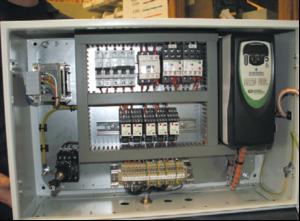

|
Edward Lowton
Editor |


|
| Home> | Energy Management | >Motors and drives | >Inverter technology feeds savings |
ARTICLE
Inverter technology feeds savings
25 January 2013
When a major animal feed manufacturer, producing over 34,000t of product every year from its Merseyside plant wanted to explore energy saving opportunities it contacted Rewinds & J.Windsor, an Official Drives Partner f

When a major animal feed
manufacturer, producing
over 34,000t of product
every year from its Merseyside plant
wanted to explore energy saving
opportunities it contacted Rewinds &
J.Windsor, an Official Drives Partner
for Control Techniques inverters.
Electricity consumption at the Merseyside plant was close to £94,000 per year and with prices rising, the company tasked RJW with a site-wide, energy reduction survey.
This identified 12 motors and motor/fan units as offering the greatest potential payback, according to cost analysis software specially written by Control Techniques. Twelve drive panels containing 'Commander SK' inverters were built at RJW's panel building department and installed by the company's site installation team. The drives varied in size from 5.5 to 37kW with an average size of 15kW.
The company says by using inverter drives, it was possible to reduce the speed of the motors running the fans and therefore save the energy used in powering the motors.
The saving made is equivalent to the square of the speed reduction, meaning that a speed reduction of only 20% (which is usually possible) creates close to a 50% energy reduction.
Electricity consumption at the Merseyside plant was close to £94,000 per year and with prices rising, the company tasked RJW with a site-wide, energy reduction survey.
This identified 12 motors and motor/fan units as offering the greatest potential payback, according to cost analysis software specially written by Control Techniques. Twelve drive panels containing 'Commander SK' inverters were built at RJW's panel building department and installed by the company's site installation team. The drives varied in size from 5.5 to 37kW with an average size of 15kW.
The company says by using inverter drives, it was possible to reduce the speed of the motors running the fans and therefore save the energy used in powering the motors.
The saving made is equivalent to the square of the speed reduction, meaning that a speed reduction of only 20% (which is usually possible) creates close to a 50% energy reduction.
MORE FROM THIS COMPANY
OTHER ARTICLES IN THIS SECTION

















